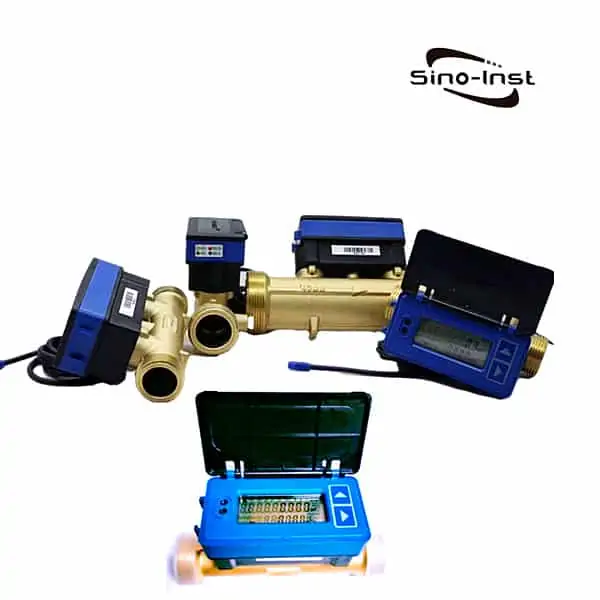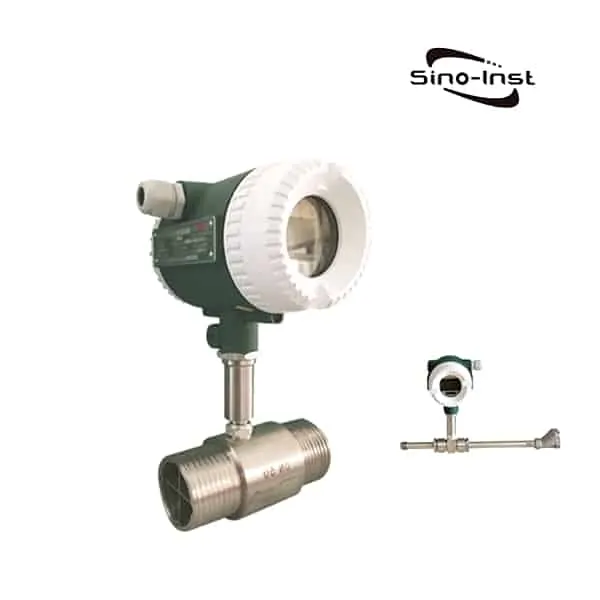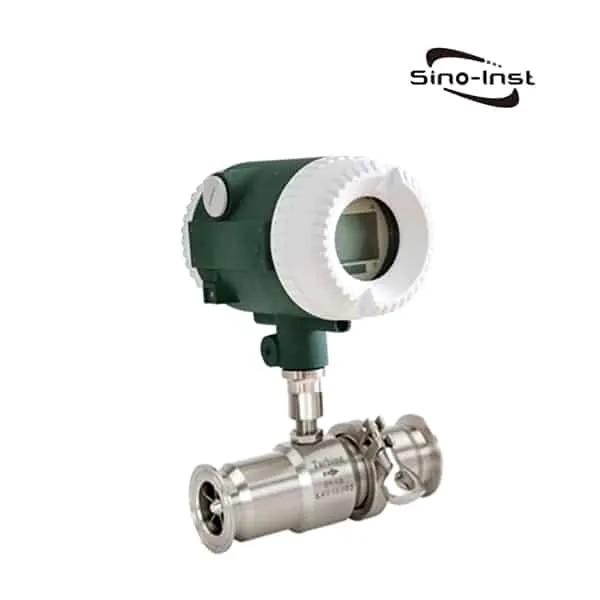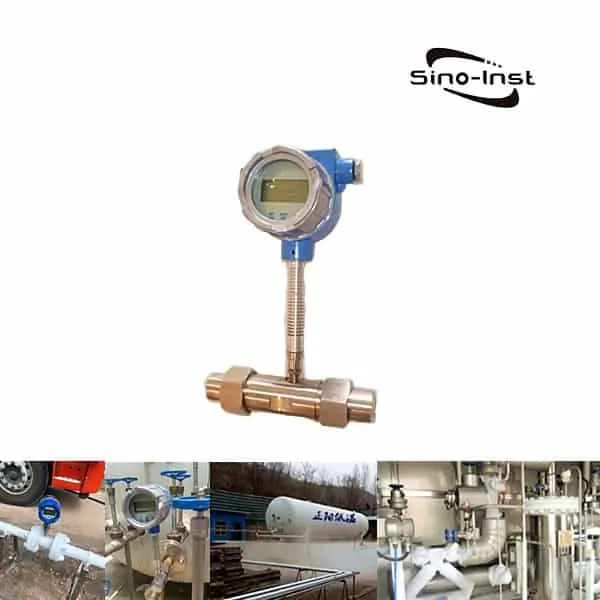What is a Paddle wheel flow meter?
Paddle wheel flow meter is a mechanical flow meter that uses an impeller as a flow sensor component. The impeller-type flow meter is a meter that measures flow according to the principle of fluid momentum moment. Paddle wheel flow meter is also called an impeller flow meter, rotary wheel flow meter, etc. Typical Paddle wheel flow meters are water meters and turbine flow meters. It can be a mechanical transmission output type or an electric pulse output type. It is suitable for the measurement and control of industrial process clean water pipelines or low-concentration acid-base, low-viscosity single-phase fluid non-trade settlement process.
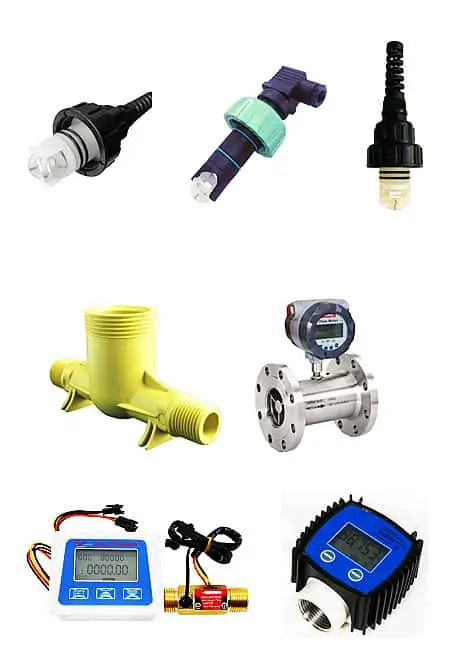
Paddle wheel flow meter Features
- Has good anti-interference
- Strong signal transmission capability (the farthest transmission is 300 meters)
- Stable quality and low failure rate
- Superior performance-price ratio
- Wide range measurement.
- All measurement parameters can be adjusted independently.
- Output 4-20mA or RS485 communication output, two pairs of alarm output contacts.
- Display real-time flow and cumulative flow.
- Insertion installation.
Application range of impeller flowmeter
- Flow monitoring of industrial water treatment process
- Industrial circulating cooling water and make-up water flow monitoring
- Reclaimed water flow monitoring
- Process flow monitoring after wastewater treatment
- Agricultural irrigation water flow measurement
- Multi-way valve and multi-valve system flow monitoring for softening, filtering, etc.
- Other water flow detection and control
Extended reading: Insertion Ultrasonic Water Flow Meter – Designed for Agricultural Irrigation, Garden Management
Paddle wheel flow meters parameters
| Picture | 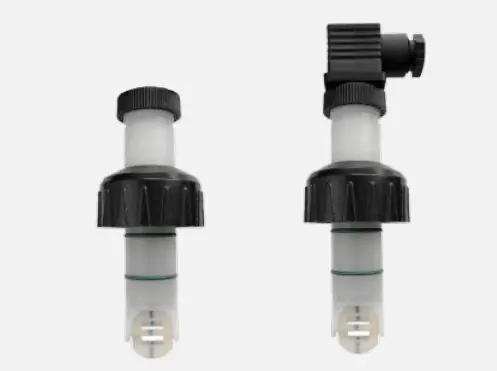 | 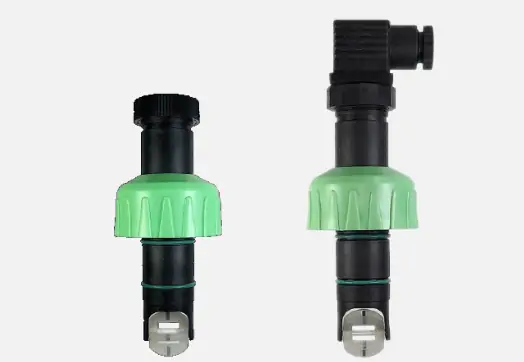 |
| Model | KF11 Corrosion-resistant flow sensor | KF11 series impeller flow meter |
| Description | Suitable for highly corrosive fluids, sulfuric acid, nitric acid, hydrofluoric acid, hydrochloric acid, mixed acid, strong alkali and other places; The flow parts are made of corrosion-resistant materials such as PVDF·PTFE·Hastelloy·Titanium alloy; there is almost no pressure loss and maintenance-free; Flow velocity range 0.3-6m/s, can measure fluid with flow velocity greater than 0.3m/s; Not applicable to media containing particles and fibrous impurities; | The impeller adopts a five-piece runner design PP/PVDF/PTFE material Better guarantee the dynamic balance characteristics, greatly improving the linear accuracy and repeatability accuracy of the sensor; The minimum flow rate is 0.1m/s; NPN open collector output, which can be directly transmitted to a flow transmitter or PLC, a standard square wave signal and a maximum distance of 300m; Applicable caliber: DN25-DN600 (1″-24″); Not suitable for particles and fibrous impurities The medium; |
| Caliber range | DN25-DN600(1″-24″) | DN25-DN600(1″-24″) |
| Flow rate range | 0.3-5m/s | 0.1-8m/s |
| Output signal | Square wave pulse signal: (40-45Hz) nominal flow rate per m/s | Square wave pulse signal: (40-45Hz) nominal flow rate per m/s Equipped with pulse conversion components can output 4-20mA |
| Characteristic | Hall pulse output, open collector NPN, strong driving ability Has high chemical resistance Minimum flow rate 0.3m/s IP68 protection grade suitable for harsh on-site environment | Hall pulse output, open collector NPN, strong driving ability Has high chemical resistance IP68 protection grade suitable for harsh on-site environment Plug-in type, easy installation, good reliability, almost maintenance-free |
| Linear accuracy L Repeatability accuracy R | L=±1% R=±0.5% | L=±1% R=±0.5% |
| Ontology | PVDF/PTFE | PP plus glass fiber/CPVC |
| Impeller | PVDF/PTFE | PP/PVC/PVDF/PTFE |
| Shaft and bearing | Hastelloy C/Titanium Alloy/ZrO2 | Al2O3/ZrO2/SS316L/Hastelloy C/Titanium Alloy |
| O-ring | fluororubber | FPM/EPDM/Fluorine rubber |
| Temperature and pressure | PVDF body: 12.5bar@25℃-2.5bar@100℃ PTFE body: 12.5bar@25℃-2.5bar@100° | PP body: 12.5bar@25℃-1.7bar@80℃ CPVC body: 12.5bar@25℃-1.7bar@80℃ |
| Power supply system | DC 5-24V | DC5-24V |
| Protection level | IP68 | IP68 |
| Application field | Sulfuric acid ratio and delivery flow monitoring Copper sulfate monitoring in electroplating bath Nitric acid mixture Intermediate Chemical waste | Pure Water Process/Reverse Osmosis/Ultrafiltration/EDI Water purification and filtration system Cooling water and boiler water monitoring Chemical industry Agricultural irrigation Cleaning system and single crystal silicon cleaning Pump protection |
Check more Choosing The Right 1 Inch Flow Meter.
Paddle wheel flow meter working principle
The sensor is divided into two parts: the transmitter and the impeller. The impeller is in direct contact with the fluid, and the transmitter is isolated from the fluid. The liquid flow drives the impeller to rotate, and there are four evenly distributed magnetic blades on the impeller. The rotating magnetic blade induction Hall switch generates a frequency signal proportional to the flow rate, and the transmitter converts the frequency signal into a 4-20mA current signal.
Typical Paddle wheel flow meters are water meters and turbine flow meters. The structure can be a mechanical transmission output type or an electric pulse output type.
The accuracy of water meters with general mechanical transmission output is low, with an error of about ±2%. However, the structure is simple and the cost is low. It has been mass-produced in China, and is standardized, generalized and serialized. The accuracy of the turbine flowmeter output by the electric pulse signal is relatively high, and the general error is ±0.2%-0.5%
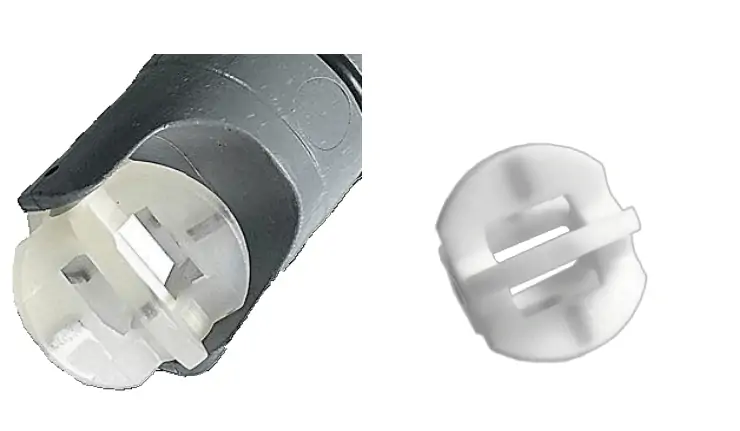
The five-piece impeller design is in line with the principle of fluid mechanics, and the uniform force angle produces a better dynamic balance, ensuring better linear accuracy and repeatability accuracy
Various shafts and bearings:
Shaft and bearing: ZrO2, SS316L, Hastelloy C
Impeller material: PTFE, PP, PVDF, ABS
Body material: PP plus glass fiber, ABS, CPVC, PTFE, SS316L, brass
Real flow calibration
Calibration range: DN10-DN1000
Each sensor has undergone strict calibration and quality inspection. When leaving the factory, each sensor guarantees that the K factor is 2% of the standard value, and the repeatability accuracy is 0.5%;
Read more about: What is an inline flow meter?
Paddle wheel flow meter advantages and disadvantages
Advantage
- Excellent reproducibility and responsiveness.
- Simple structure and low price.
- Small size, large-capacity measurement is possible.
Disadvantage
- Extremely sensitive to foreign objects. (Causing blockage)
- Due to the high-speed rotation of the impeller, regular maintenance is required to cope with axial wear or to replace the impeller.
Extended reading: How to Select the Right Agriculture Flow Meter
Paddle wheel flow meter installation
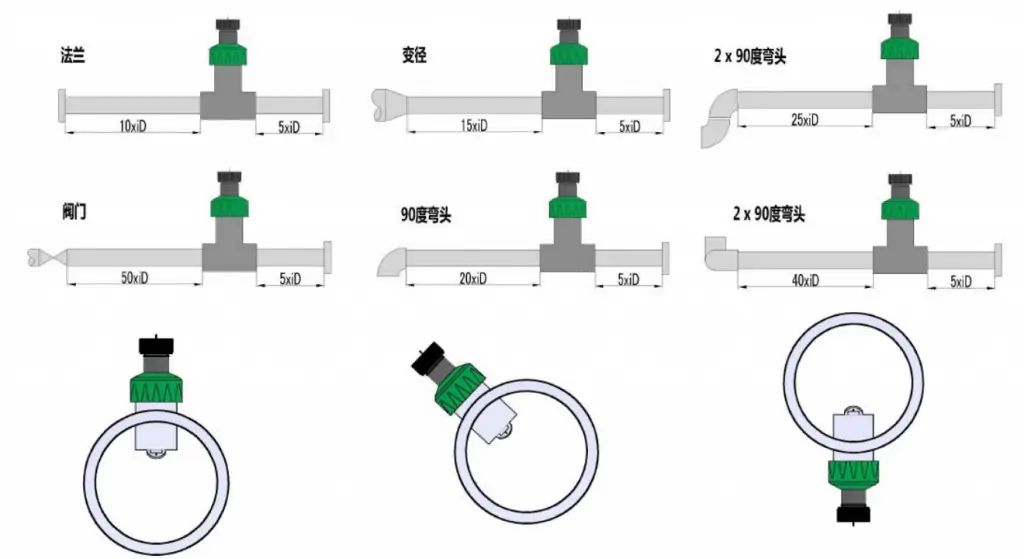
- The straight section behind the flange must meet the measuring distance of the first 10 and the rear 5 times the pipe diameter;
- After reducing the diameter (only allowed to change from large to small, but not allowed to change from small to large), the straight line segment needs to meet the measurement distance of the first 15 and the back 5 times the pipe diameter;
- The straight section behind the first-level equal-diameter elbow needs to meet the measuring distance of the first 20 and 5 times the pipe diameter;
- The straight section behind the two-stage continuous equal-diameter elbow on the same plane must meet the measurement distance of the first 25 and the rear 5 times the pipe diameter;
- The straight section behind the non-coplanar two-stage continuous equal-diameter elbow needs to meet the measuring distance of the first 40 and the back 5 times the pipe diameter;
- The straight section behind the valve must meet the measurement distance of the first 50 and the last 5 times the pipe diameter;
- The probe is recommended to be installed perpendicular to the pipe, and not at the bottom of the pipe;
- The probe can be installed on a vertical pipe where the liquid flows upward, but it must also meet the requirements of the above-mentioned straight section;
- The probe is not allowed to be installed on a vertical pipe where the liquid flows downward;
- The liquid in the tested pipeline must be full of flow, and no gas and liquid can flow at the same time;
- The cost of the body must be consistent with the bayonet (open slot) to ensure the correct installation position;
- The O-ring has a good sealing effect. When the installation is tight, it needs to be wetted with silicone oil or water for installation;
- The sensor locking cap must be tightened to prevent excessive pressure in the pipeline from leaking or ejecting;
- When installing outdoors, pay attention to waterproof treatment; keep the cables dry to avoid moisture damage;
- Do not lay the sensor cable and AC power cable in the same protective tube to avoid electrical interference
Extended reading: Industrial VS Residential inline water flow meters
More Featured Paddlewheel flowmeters
You may like:
Sino-Inst, paddle wheel flow meter manufacturer. It can measure a single sound-conducting liquid medium of Velocity range: 0.1~6m/s; Pipe diameter: DN15 to DN600.
Sino-Inst’s paddle wheel flow meter, made in China, Having good Quality, With a better price. Our flow measurement instruments are widely used in China, India, Pakistan, the US, and other countries.

Wu Peng, born in 1980, is a highly respected and accomplished male engineer with extensive experience in the field of automation. With over 20 years of industry experience, Wu has made significant contributions to both academia and engineering projects.
Throughout his career, Wu Peng has participated in numerous national and international engineering projects. Some of his most notable projects include the development of an intelligent control system for oil refineries, the design of a cutting-edge distributed control system for petrochemical plants, and the optimization of control algorithms for natural gas pipelines.



